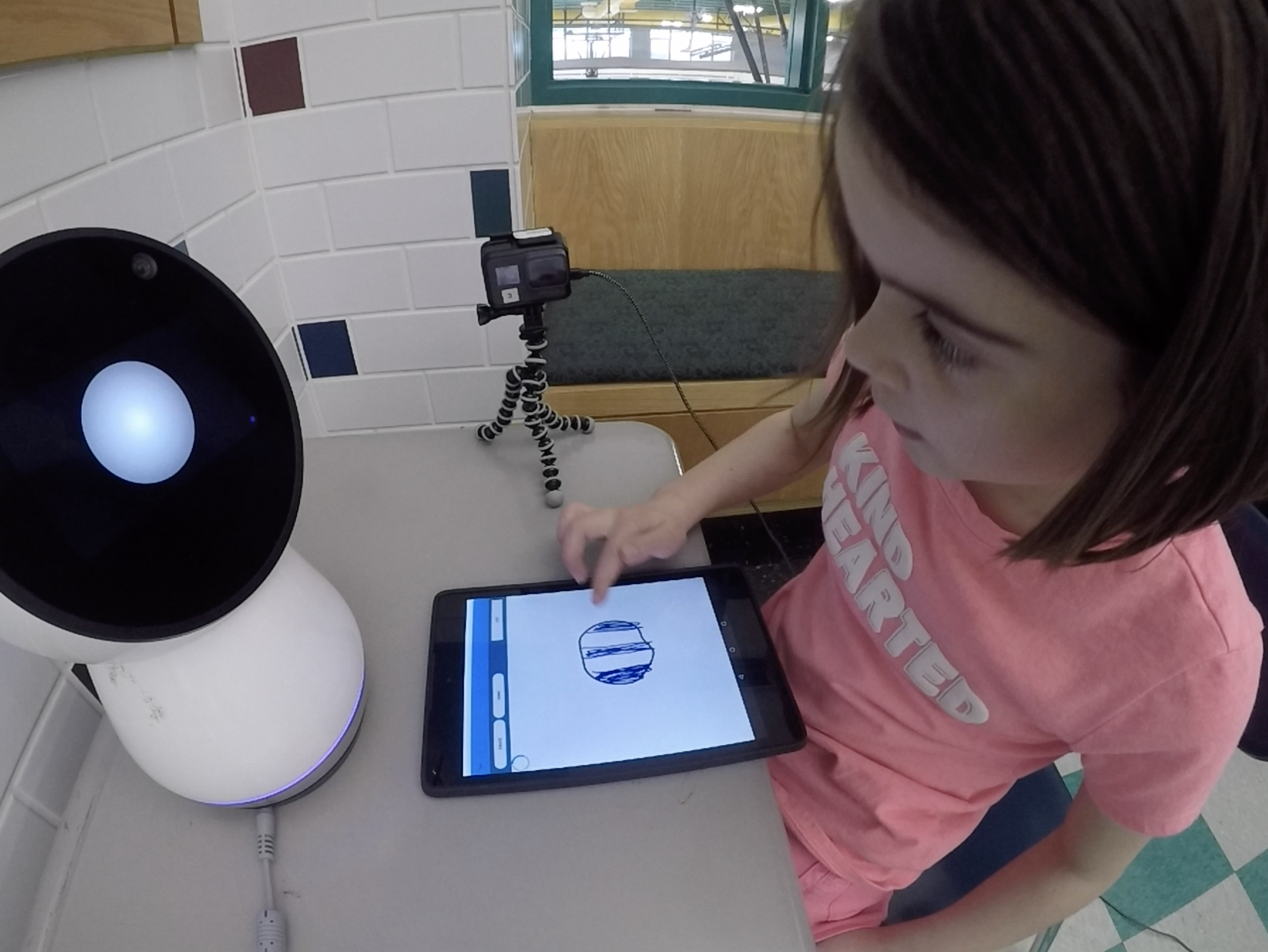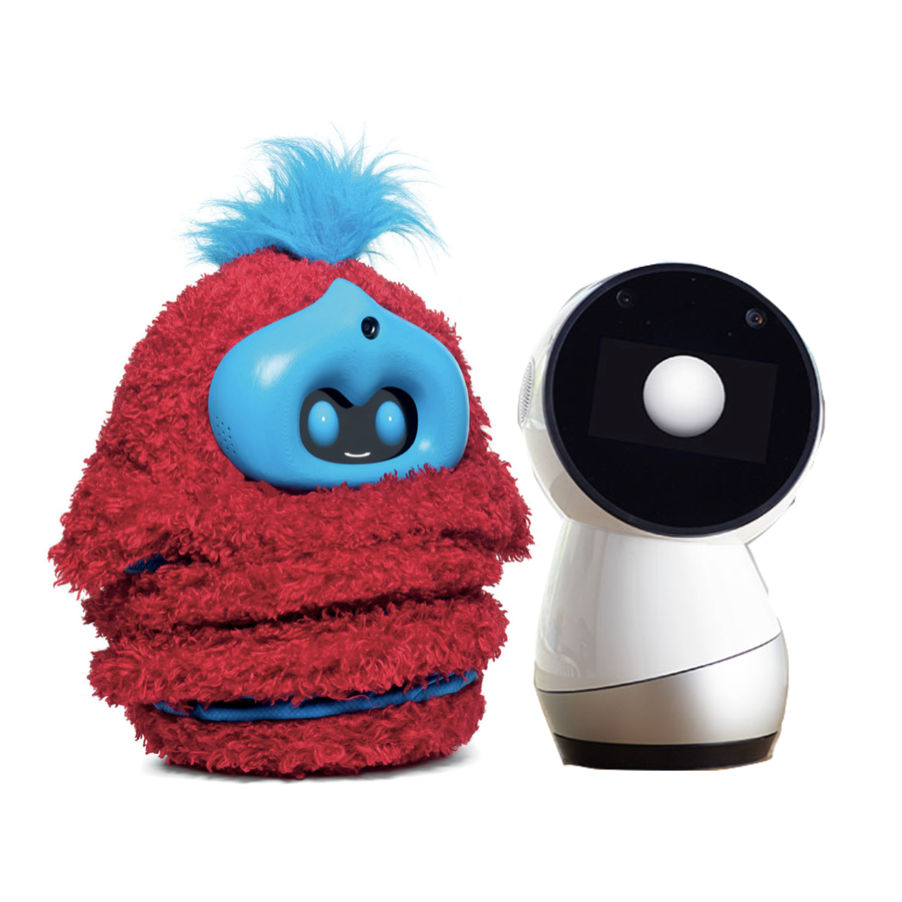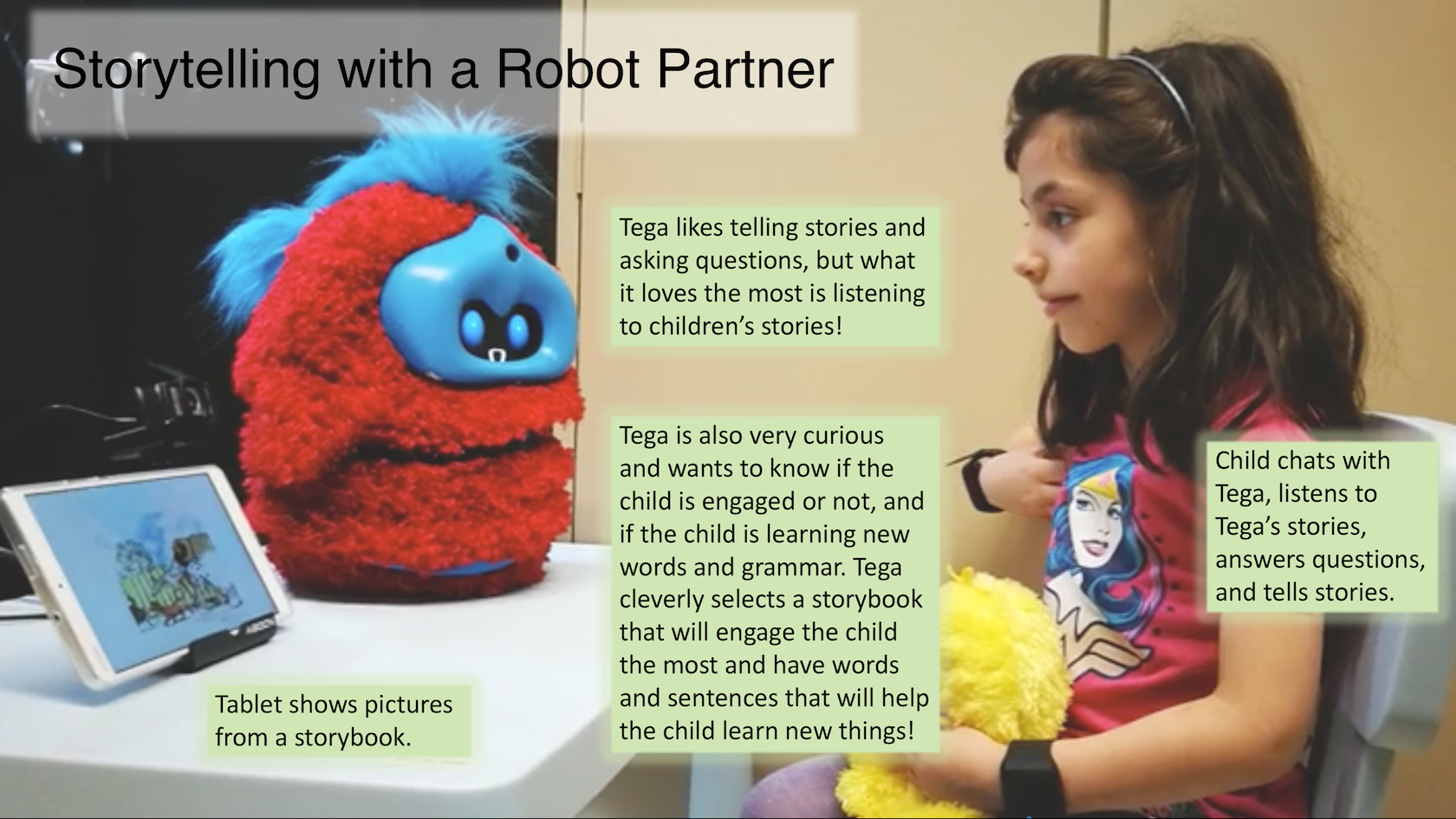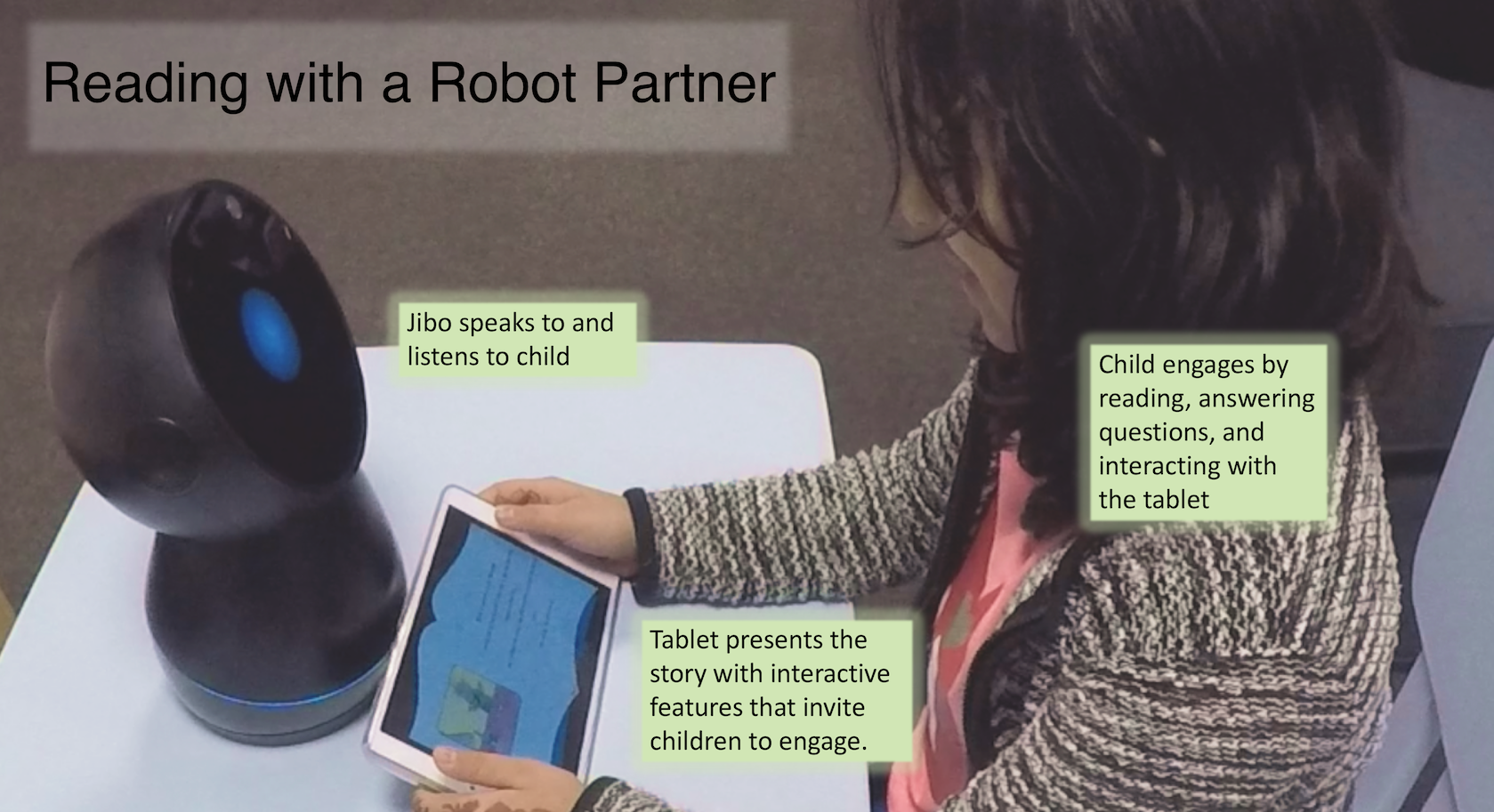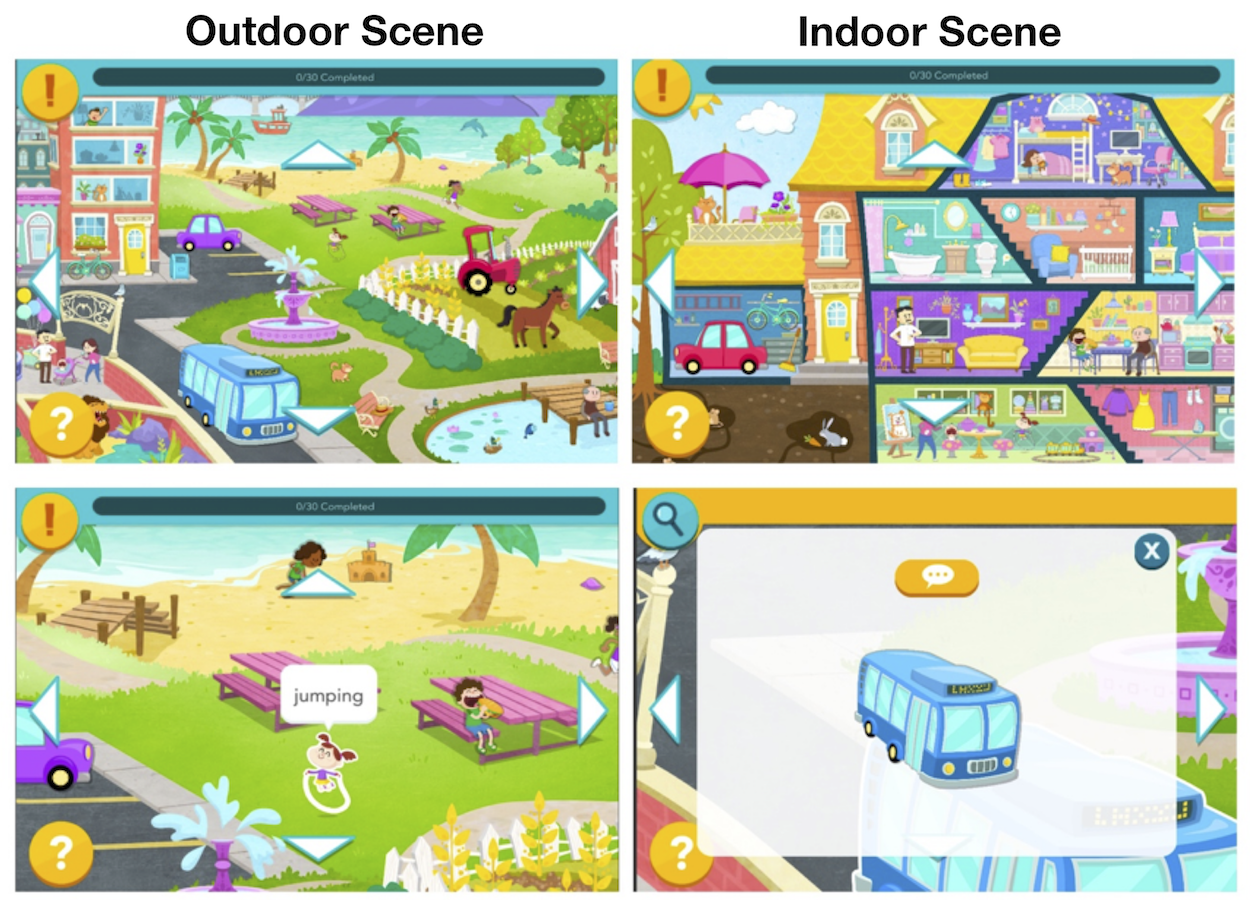Creativity Games
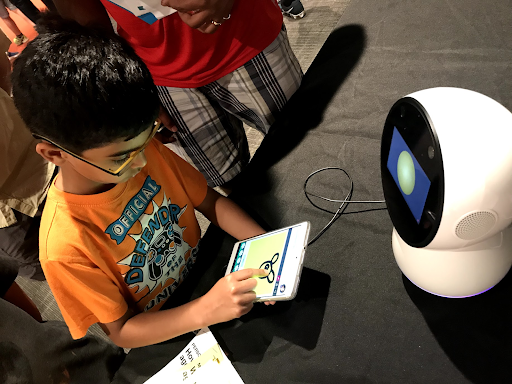
Creativity games are a set of collaborative game based activities that help promote creativity in gameplay. These games are designed for children from 5-10 to be played collaboratively with a robot. Our goal is to use child-robot interaction to enhance creative thinking during play, by scaffolding creativity and demonstrating artificial creativity.
Droodle Game
The Droodle Creativity Game is inspired from the Droodle Creativity Task developed by Kahn et al., to measure creativity. Participants are presented with a Droodle, a simple abstract drawing that “comes into focus” (in a surprising way) with the addition of a clever title, and they are tasked with generating Droodle titles. The child and the robot take turns to come up with Droodle titles. The robot responds to children’s titles, such as ‘I find that funny’, or ‘Oh is that it?’. In addition to these verbal interactions, the robot also shows multiple expressions of thought and curiosity, and expresses surprise and excitement upon coming up with creative titles.
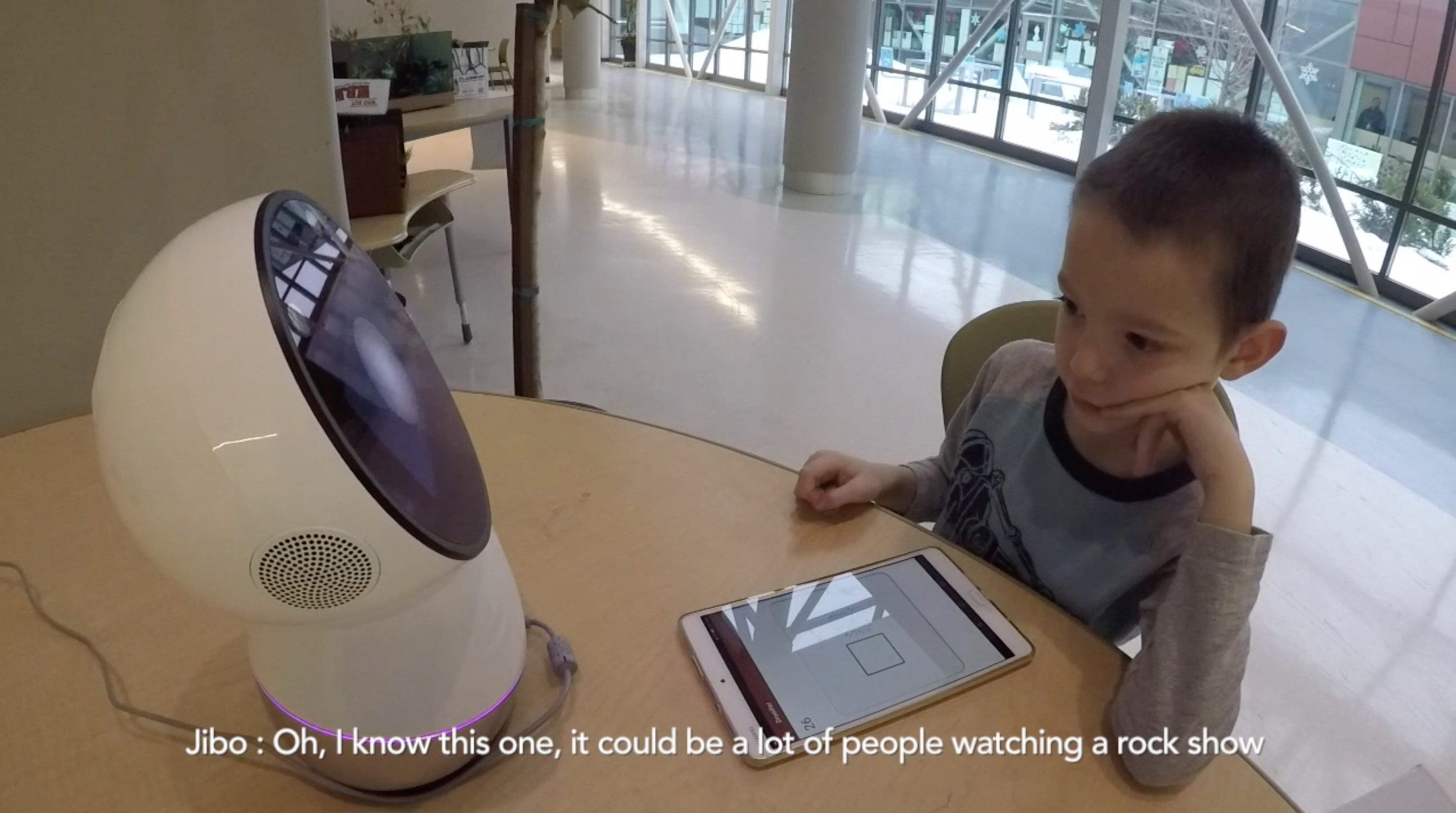
JiboDraw (Pictionary)
JiboDraw is a collaborative drawing application, where children can play a drawing-guessing game with Jibo, and learn to draw letters, numbers, and drawings with Jibo. JiboDraw has two modes - Learn and Play. The learn mode involves Jibo using drawing guides to help children learn how to draw. The play mode involves the children drawing objects that Jibo can guess.
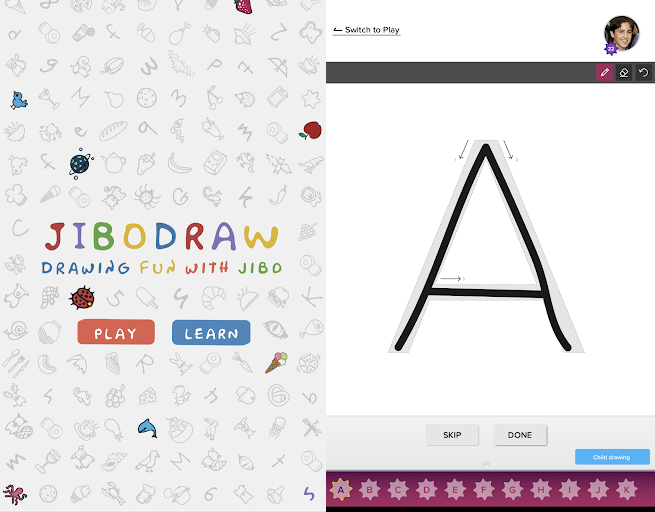
MagicDraw (Predictive Drawing):
MagicDraw is a generative drawing game where the player is given a starting drawing prompt (example, a circle), and the other player draws on top of it to convert it to a new object. The robot and the child take turns to provide a starting prompt, while the other player draws an image on top of it.
